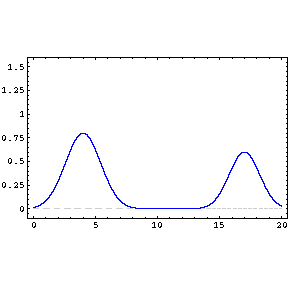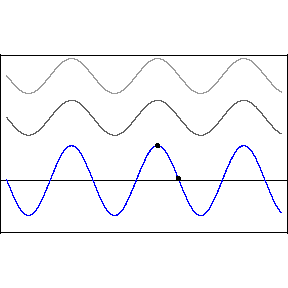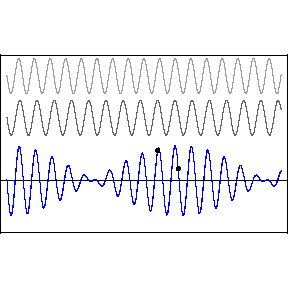
|
The movie at left shows how a standing wave may be created from two
travelling waves. If two sinusoidal waves having the same frequency
(wavelength) and the same amplitude are travelling in opposite
directions in the same medium then, using superposition, the net
displacement of the medium is the sum of the two waves. As the movie
shows, when the two waves are 180° out-of-phase with each other they
cancel, and when they are in-phase with each other they add together.
As the two waves pass through each other, the net result alternates
between zero and some maximum amplitude. However, this pattern simply
oscillates; it does not travel to the right or the left. I have placed
two dots on the string, one at an antinode and one at a node. Which is
which?
|








